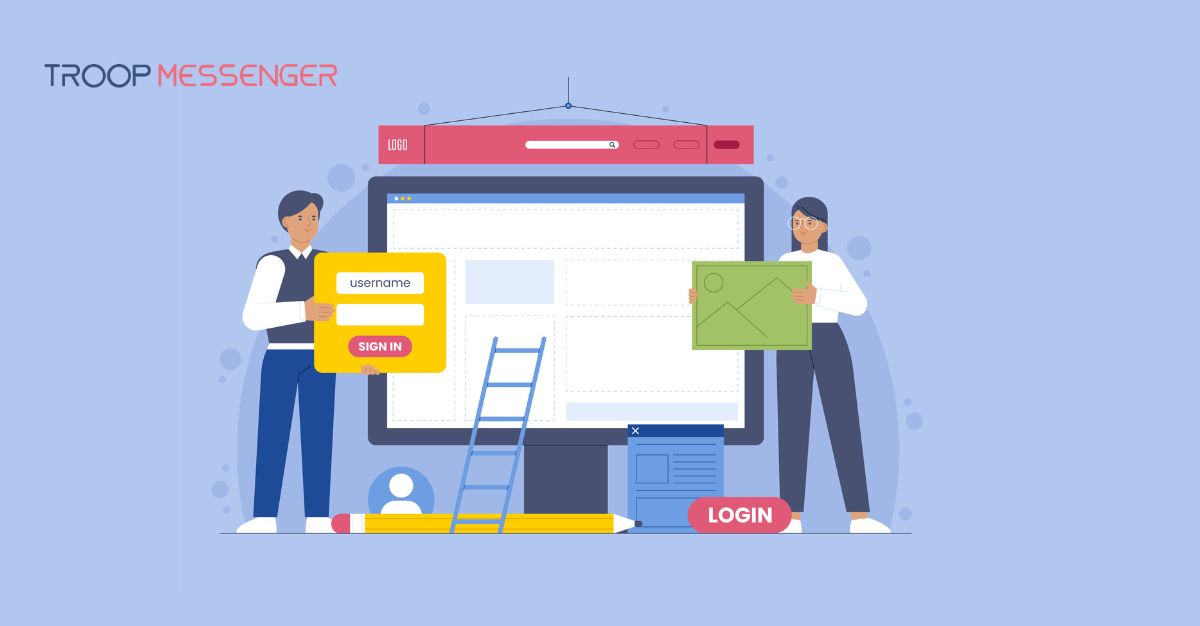Connect with us
.jpg)
Payroll Software Free Trial Options to Test Before You Buy
At first glance, the multitude of payroll software choices can seem overwhelming. With the variety of platforms available today, each offering different capabilities, interfaces, and pricing models, making a well-informed decision requires a deep dive into the available options. Luckily, many providers offer free trial periods, enabling prospective users to try out features before committing. This strategy not only helps save money but also guarantees that the selected solution aligns with the organization’s needs. Understanding what to anticipate from these trial runs can significantly improve the decision-making process and reduce the risk of future issues.
Why Should You Give a Free Trial a Chance?
Trying out payroll software with a payroll software free trial allows you to experience it firsthand and see how user-friendly and compatible it is. The ability to navigate and experiment within the system enables businesses to test its efficiency in real-world situations. Testing platforms can help you uncover strengths and weaknesses that aren't obvious from just reading descriptions or watching promotional videos. These practical insights can reveal whether the software meets expectations or falls short in critical areas.
During the trial period, you can also assess the reliability and responsiveness of customer support services to see if they meet your expectations. For businesses with tight payroll deadlines or complex needs, knowing that help is readily available can be a game changer. This trial window also offers a chance to involve relevant team members, such as HR and accounting, in the process, ensuring everyone’s input is considered before a final decision is made.
Main Features
During trial periods, a service or product’s usage allows users to explore and discover its full range of functionalities. A vital aspect to investigate is the automation functions, which can simplify routine tasks and minimize mistakes while saving users time. From automatic tax filing and compliance updates to scheduled payroll runs, these features can make operations significantly more efficient.
Also important is the integration aspect, with systems guaranteeing smooth and reliable data transfer between different platforms like accounting, HR management systems, and benefits tools. A truly integrated system reduces the need for double data entry, cuts down on human error, and improves overall workflow.
Additional benefits come from customization options, like personalized reports or specific payroll setups that can improve productivity. Some systems even allow tailored alerts or approval workflows to match your internal processes.
Time-tracking integration is another essential feature. Efficient systems seamlessly integrate time data, reducing errors in wage calculations and ensuring accurate payroll processing. This feature is especially useful for organizations with hourly employees or multiple shifts.
Look for software offering employee self-service portals. These portals empower employees to access pay stubs, tax forms, and update personal information. Enabling staff to handle their own updates reduces administrative work for HR departments and boosts employee satisfaction by offering transparency and control.
Another feature worth examining is compliance assistance. Payroll software should stay updated with tax codes and labor laws, helping businesses avoid penalties. Use the trial period to verify if the software offers alerts for tax deadlines or state-specific compliance.
User Experience
A user-friendly interface plays a critical role in shaping the overall user experience when trying out a new platform or software tool. During your trial period, note how the layout and navigation are structured. Is it intuitive? Are commonly-used tools easy to find? A well-designed interface can streamline tasks and boost efficiency. The learning curve should be minimal, especially for users who may not have a strong technical background.
Pay close attention to how data is displayed and assess the clarity of instructions and tooltips. Ensuring ease of use is crucial for all users but is especially beneficial for those who may not have much payroll or software expertise. User frustration can reduce productivity, so a clean and logical design is key.
Customer support is another aspect to consider. Assess the availability and responsiveness of support teams. Reliable customer service ensures quick resolution of any issues that may arise. During the trial, test the support channels to gauge efficiency. Try sending inquiries via email, chat, or phone, and observe the response times and helpfulness. Explore FAQs, help docs, or video tutorials to see how easy it is to find answers on your own.
Scalability and Flexibility
Businesses evolve, and payroll software should be flexible enough to adapt to changing needs. Evaluate the software’s scalability during the trial. Consider if it can accommodate future growth and additional features. If your team expands or your operations diversify, can the system handle new pay structures, tax jurisdictions, or benefit packages?
Flexibility in customization is also vital, enabling businesses to tailor the software to specific requirements. Some companies need multilingual capabilities or support for global operations, while others may need industry-specific compliance tracking. Make sure the software can grow with your business.
Integration capabilities play a significant role in flexibility. Ensure seamless integration with existing systems like accounting and HR software. This integration streamlines processes and enhances overall efficiency, making the software more valuable in the long run. Check if APIs are available or if third-party apps work with the system, which can further future-proof your investment.
Cost Considerations
While the trial period is free, it’s essential to understand the costs involved once the trial ends. Evaluate pricing structures and subscription models carefully. Some software may offer tiered pricing based on features, employee count, or number of users. Others may charge extra for add-ons such as tax filing, direct deposit, or advanced reporting.
Understanding these costs helps in budgeting and planning for future expenses. Also, look into contract requirements — are you locked in for a year, or is there a month-to-month option? Make sure you’re fully aware of any hidden fees or cancellation policies.
Many companies offer promotional discounts or extra onboarding support if you sign up after the trial, so don’t hesitate to negotiate. You may also want to explore whether the provider offers bundles for payroll, benefits, and HR tools, which can save money long-term.
Getting the Most Out of Trials
Maximizing the benefits of a free trial involves a strategic and organized approach. Start by identifying specific needs and goals. This clarity helps in focusing on relevant features rather than being distracted by bells and whistles that don’t add value.
Encourage team members to participate in testing. Diverse perspectives provide valuable insights into how the software meets various departmental needs. For instance, HR might value onboarding features, while accounting may be more focused on reporting accuracy.
Document feedback during the trial period. This documentation serves as a reference when making the final decision. Use simple scorecards or spreadsheets to compare ease of use, functionality, support, and pricing. Pay attention to any limitations encountered during the trial. Understanding these limitations helps in setting realistic expectations and avoiding disappointment post-purchase.
Run real scenarios, such as issuing bonuses, correcting timesheets, or onboarding new hires. This helps identify if the system supports your processes or requires workarounds. The more you replicate day-to-day tasks, the more confident you'll be in your decision.
Customer Assistance
Customer service is essential when implementing software systems into your business operations. While trying out the software, assess the quality and speed of customer support services. Consider whether assistance is provided through live chat, email, or phone. Availability during your business hours is crucial — especially if you're in a different time zone from the vendor.
Also, dive into the resources available, such as setup guides, frequently asked questions, and community forums. A robust support system can facilitate a smoother transition and guarantee sustained growth in the long run. Check if there are onboarding sessions, product tours, or even access to dedicated account managers during the trial.
Safety and Adherence to Regulations
Businesses that handle sensitive employee information must prioritize data security and compliance. When examining the software during the trial period, assess its security features. This should involve checking encryption methods, access restrictions, audit trails, and available options for backing up data.
Furthermore, ensure the software complies with data protection laws and regulations such as GDPR, HIPAA, or regional labor laws. This is especially important for businesses that operate in multiple countries or industries with strict regulations. Ask vendors how they stay current with changes in legislation and whether they provide compliance reports or updates.
Planning for Expansion and Future Growth
As companies develop, their operations evolve, and their payroll requirements may change. Throughout the trial phase, evaluate the software’s scalability and ability to support business expansion. Decide if it can handle growth without requiring significant upgrades or extra expenses. Consider if there are options for increasing the number of users, departments, or pay groups.
Look into possibilities for enhancing features — can modules like benefits management, performance tracking, or scheduling be added later? A scalable solution guarantees long-term sustainability and prevents you from having to switch platforms as you grow.
Opinions and Feedback
Collect input from existing users to gain insights about the product’s performance and user experience. Evaluate reviews and testimonials during the trial period to assess satisfaction. Pay attention to repeated concerns or praise points — these often highlight key issues that marketing content won’t disclose.
User feedback may reveal concerns or unforeseen advantages not typically mentioned in materials. Connect with individuals who have trialed the software to obtain a firsthand viewpoint that can assist in making informed decisions. Sometimes, forums or LinkedIn groups can offer honest, unfiltered opinions from real users.
Getting the Best Out of the Trial Period
Making the most of the trial period requires planning and coordination. Specific team members should be designated to explore all aspects of the software’s capabilities thoroughly. Scenarios should be replicated to gauge performance under real conditions.
Invite team input on user-friendliness, effectiveness, and any obstacles encountered. Evaluate whether the software supports your workflow or requires unnecessary changes. By working together in this manner, a well-informed decision can be made based on a thorough evaluation and collaborative effort.
Summary
Trying out trial versions of payroll software presents a valuable chance to make informed choices based on a proper evaluation of features, such as user-friendliness and support services, alongside security measures and scalability options that best suit your requirements. These trial experiences allow companies to test the waters without the risk of financial commitment. Putting these solutions to the test and gathering insights from those already using them can help make better decisions that align with long-term goals.
In the end, choosing the right payroll system plays a critical role in smoothing operations and boosting productivity, rendering the initial time invested quite valuable. A careful and strategic trial experience helps ensure the selected solution is a perfect match, both now and as your business continues to grow.








